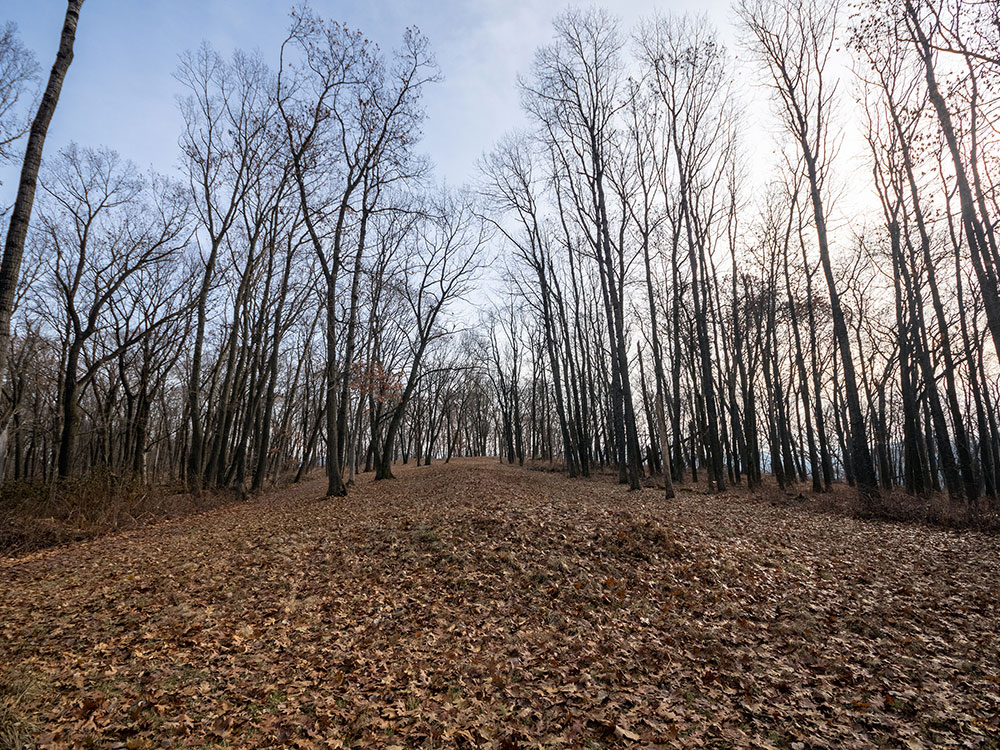Monument preserves more than 200 prehistoric mounds built by pre-Columbian Mound Builder cultures, mostly in the first millennium AD
General Information
How to Get There
Overview
Effigy Mounds National Monument preserves more than 200 prehistoric mounds built by pre-Columbian Mound Builder cultures, mostly in the first millennium AD, during the later part of the Woodland period of pre-Columbian North America. Numerous effigy mounds are shaped like animals, including bears and birds.
The monument is located primarily in Allamakee County, Iowa, with a small part in Clayton County, Iowa. The park's visitor center is located in Harpers Ferry, Iowa, just north of Marquette.
Prehistoric earthworks by mound builder cultures are common in the Midwest. However, mounds in the shape of mammals, birds, or reptiles, known as effigies, apparently were constructed primarily by peoples in what is now known as southern Wisconsin, northeast Iowa, and small parts of Minnesota and Illinois. Exceptions are the Great Serpent Mound in south-eastern Ohio, and Mound A at Poverty Point, Louisiana, built in the shape of a large soaring bird.
Effigy Mounds National Monument takes in the western edge of the effigy region. The North Unit (67 mounds) and South Unit (29 mounds) are located where the counties meet along the Mississippi River. They are contiguous and easily accessible. The Sny Magill Unit (112 mounds) is approximately 11 miles (18 km) south of the other units, and offers no visitor facilities. Other mounds are located on remote parts of the Monument property. The monument contains 2,526 acres (10.22 km2) with 206 mounds, of which 31 are effigies. The largest, Great Bear Mound, measures 42 meters from head to tail and rises over a meter above the original ground level.
In northeastern Iowa the Effigy Mounds area was a point of transition between the eastern hardwood forests and the central prairies. Native American and early settlers would have been able to draw on natural resources available in forests, wetlands, and prairies. These areas were occupied by humans for many centuries.
Effigy Mounds is adjacent to the Upper Mississippi River National Wildlife and Fish Refuge, the Driftless Area National Wildlife Refuge, the Yellow River State Forest, and a short distance to the south, Pikes Peak State Park. There are also a number of state-owned wildlife management areas, such as the one at Sny Magill Creek, where Clayton County also maintains a county park.
The visitor center, located at the park entrance, contains museum exhibits highlighting archaeological and natural specimens, an auditorium, and book sales outlet. The park has 14 miles of hiking trails. No paved public vehicle access roads exist in the park. Rangers give guided hikes and prehistoric tool demonstrations that are scheduled and advertised, mid-June through Labor Day weekend.
Natural features in the monument include forests, tallgrass prairies, wetlands and rivers.
This article uses material from the Wikipedia article "Effigy Mounds National Monument", which is released under the Creative Commons Attribution-Share-Alike License 3.0

-1000.jpg)